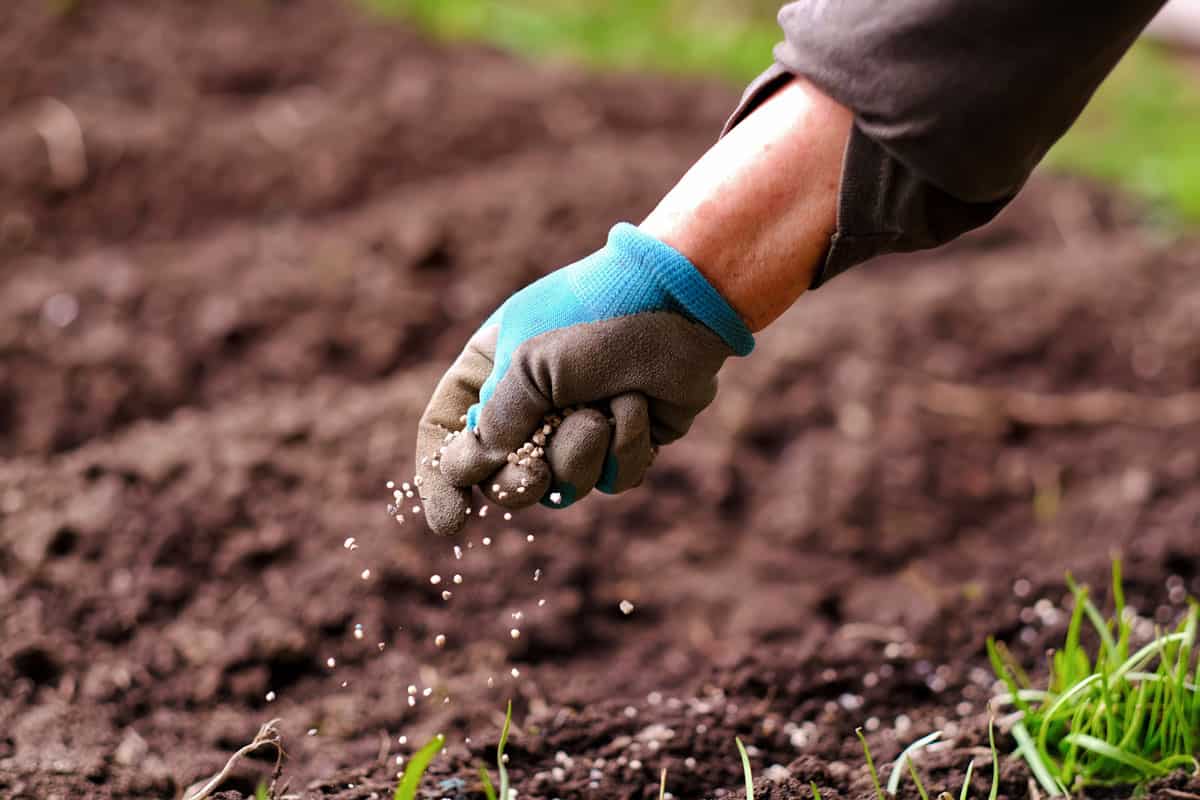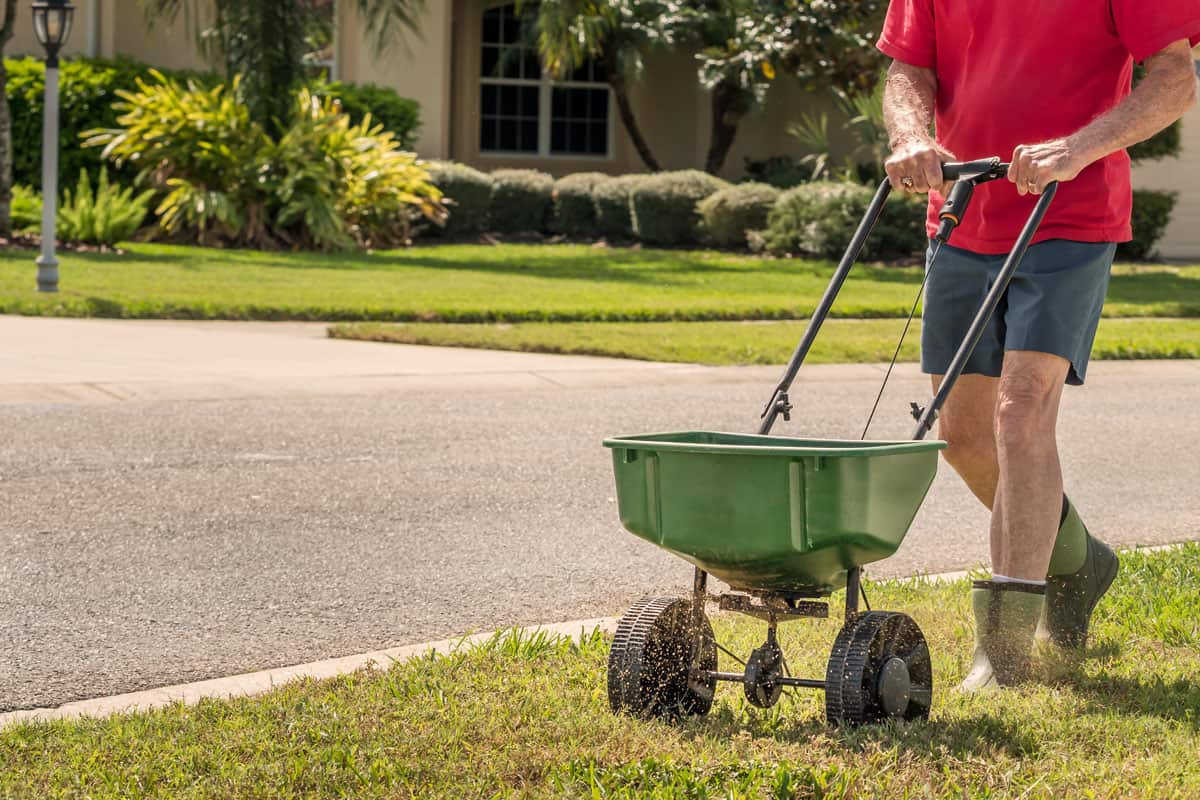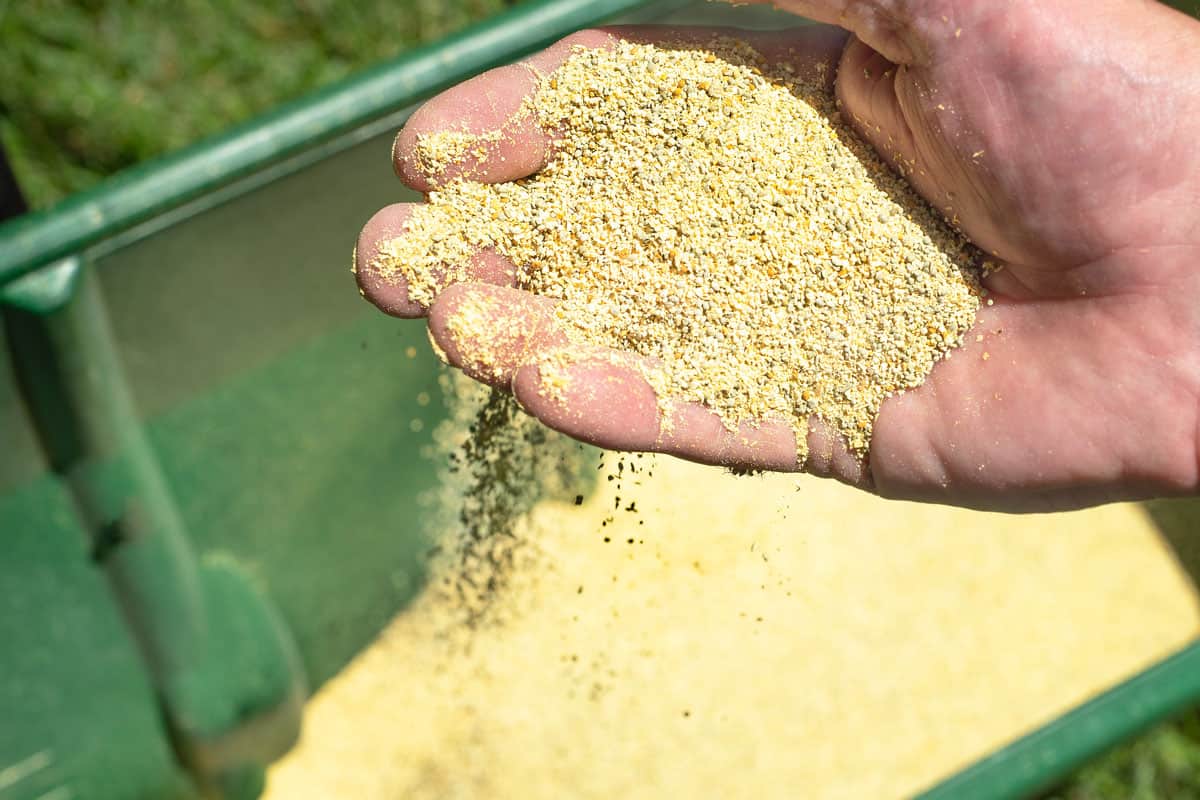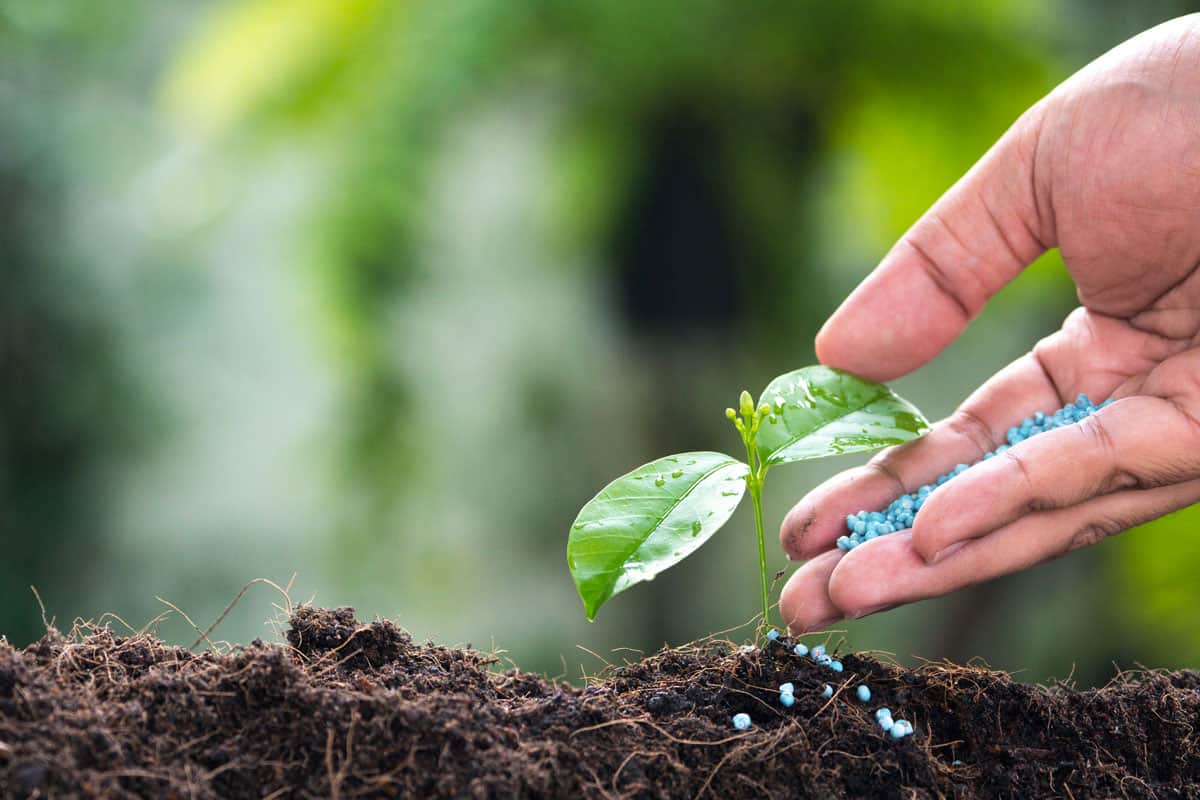Fall fertilizers are an essential part of a healthy lawn. There are a lot of different factors involved that will determine when you should apply a fall fertilizer to your lawn. We’ve researched this question, and you’ll find the answers in this article.
Fertilizing two to three weeks before freezing temperatures is essential for keeping your grass green and healthy. It is during this period that the nutrients can still permeate deep into the soil profile. Here's how you do it:
- Read the instructions on the bag
- Check the weather forecast for upcoming rainfall
- Prepare your lawn spreader
- Sweep dry leaves or any debris from the lawn
- Walk with the spreader slowly
- Remove excess fertilizer
If you want your lawn to look as beautiful and green as it can be, then you should apply a fall fertilizer. However, you should know when the right time is to apply it. You may have to skip fall fertilizing your lawn depending on the type of soil condition you have. Read on as we discuss these topics in detail.
![farmer hands pouring fertilizers on the tiny healthy green plant on the healthy soil of the garden in the yard, When To Apply Fall Fertilizer [And How To]](https://gardentabs.com/wp-content/uploads/2022/08/When-To-Apply-Fall-Fertilizer-And-How-To.png)
Ideal Time To Apply Fall Fertilizer
Fertilizers are a vital part of growing plants and crops. They are available in different forms: granules, powder, or liquid. Fertilizers are necessary to make the soil fertile, provide nutrition, and increase the rate of plant growth.
Most fall fertilizers are made up of nitrogen, phosphorus, and potassium. These are essential elements that are necessary to grow plants and crops.
Fertilizing grass before the ground freezes means that your grass will be healthier, greener, and stronger in the spring. Also, fall fertilizing your lawn ensures the fertilizer will be absorbed into the soil.
Grass will go dormant in winter and grow again in spring. This means there is a need to store as many nutrients in the soil for the grass to use later when winter is over.
The video below is from a soil scientist who talks about when and how to fall fertilize your soil:
How To Apply Fall Fertilizer
The fall fertilizing season is right around the corner, and if you're a lawn owner, you'll be happy to know that there's a lot you can do to make sure your grass comes in strong in the spring. Learn how to apply fall fertilizer correctly with these helpful hints.
1. Read the instructions on the bag
Many lawn owners get into a routine of using the same fertilizer on their lawns year after year, without ever reevaluating the product. However, fertilizer manufacturers have been known to change their products over time.
This can affect the application process and how the product works in your garden. You should always use the fertilizer label and read the instructions carefully.
2. Check the weather forecast for upcoming rainfall
Fertilizer needs to absorb moisture from the soil to release the nutrients it contains. That means it needs to be applied when the ground is wet.
It is advisable that you should give your lawn a timely treatment as it will help it absorb the nutrients in the fertilizer and keep it from getting washed away in the event of heavy rainfall.
If there's no rainfall forecast within the following day or two, you can use your sprinkler to moisten the lawn and apply fertilizer after. This way you can be sure the fertilizer has enough time to seep through the ground without risking it being washed away.
3. Prepare your lawn spreader

A rotary lawn spreader is designed to distribute fertilizer evenly over the grass. It is a very efficient way to fertilize your lawn, as the fertilizer is applied at the same time and in the same exact amount every time.
The fertilizer is generally applied by pushing the spreader slowly over the lawn. As it moves, the fertilizer is released into the grass and is spread out evenly over the entire lawn.
Check out this lawn spreader on Amazon
4. Sweep dry leaves or any debris from the lawn
If your lawn is covered with leaves, rake them into piles. Leave them under the sun until they're completely dry and powder them in any method you find convenient.
You can then mix the powdered leaves with your lawn fertilizer. The powdered leaves will provide a good food source for beneficial microorganisms in the soil.
5. Walk slowly with the spreader
When spreading fertilizer, it’s important to walk slowly with the spreader. If you're impatient and want to get this done quickly, you run the risk of spreading fertilizer too thinly or unevenly. This will result in a poorly fertilized area.
6. Remove excess fertilizer
If you have fertilizer on your driveway, patio, or walks, you need to remove it right away. If you do not do this, you may end up with stains on your concrete and asphalt surfaces.
How Much Fall Fertilizer To Apply?
A good rule of thumb is one pound of fertilizer per thousand square feet. But before you grab a pound of fertilizer and start spreading it on your lawn, always test the soil before applying fertilizer. You can do this by using a soil testing kit to determine whether or not you need to fertilize.
Check out this soil testing kit on Amazon
What Is The Best Month To Apply Fall Fertilizer?
September is the best time to fertilize your lawn because it is the last month of summer when the sun is not as strong as in the months of July and August.
Fertilizing your lawn during the late summer months helps to promote root growth and improve the overall health of the lawn. When you fertilize your lawn in the fall, the fertilizer will help your grass to grow better the next spring and the following summer.
Watering-In Fall Fertilizer: Is It Necessary?
The purpose of watering-in is to make the fertilizer available to the plants. If it is not done, the fertilizer will sit on top of the soil. This makes it inaccessible to the grass, which defeats the purpose of fertilizing.
Overwatering lawns can result in many problems. Your lawn may be dying not because the soil does not have enough nutrients, but because the grass has been starved of oxygen due to suffocation.
Fertilizing Lawn In December: Is It Okay?
It is important to fertilize your lawn after the grass has broken dormancy. Dormancy is the process by which grasses in winter go into a state of rest until the next growing season.
During this time, the leaves and roots are inactive. If you missed applying fertilizer in the fall, then you'd have a lot of work to do in the early spring to compensate for it.
Grass responds to a sudden drop in temperature by going into dormancy. That's why you have to be careful when fertilizing the lawn in December. If you apply fertilizer and the grass is dormant, it won't be able to absorb the nutrients right away.
At the end of dormancy, the grass will be active again. If you don't fertilize your lawn after dormancy, the grass may not grow as well during the spring growing season.

Fertilize Or Seed In The Fall: Which Should Come First?
Fertilizer is one of the most important ingredients that a gardener needs to grow plants. Without it, plants will never be able to grow.
It is essential that you apply the fertilizer before seeding. This will ensure that the seeds will have enough nutrients to start growing. Fertilizers help the plant to grow faster and have a better output quality.
Ideal Waiting Time From Fertilizing To Watering
A common mistake made by many gardeners is to apply liquid fertilizer to their lawn and then water the lawn right away. This doesn't give the grass time to absorb the nutrients in the fertilizer.
The ideal time interval between fertilizing (using liquid fertilizer) and watering is two to four hours.
In order for fertilizers to be properly absorbed by the soil, it is important to make sure the nutrients are dissolved and that the soil is moist. If you're using granular fertilizer, then it is highly recommended to water the lawn right away after applying it.

How Long For Granular Fertilizer to Dissolve?
Fertilizers are classified according to their rate of effect: there are quick-release and slow-release fertilizers.
Quick-release fertilizers are designed to provide quick absorption into the soil in less than 48 hours. It is ideal for people who wish to get a fast start on lawn growth.
Slow-release fertilizers are quite the opposite. They break down slowly and release nutrients gradually over the course of several weeks.
What Is The Best Temperature To Apply Fertilizer?
According to Bob Vila, it is best to wait until the weather warms up before they fertilize the lawn. Lawns thrive best when the soil warms up and the ground temperature reaches 55 degrees Fahrenheit for a minimum of 4 or 5 consecutive days.
How Often Should You Fertilize Lawn?
The average frequency of fertilization is 5 to 6 times a year, but this will vary depending on what type of soil you have on your lawn.
When it comes to fertilizing your lawn, it is vital to know that you should not overdo it. Fertilizing your lawn too often or using too much fertilizer can burn the grass on your lawn and can even cause your lawn to die.
In Closing

We have discussed thoroughly in this article the types of fertilizers according to how fast they take effect. You should also know by now when to apply fall fertilizer and how often to fertilize your lawn.
Fertilizer application timing is an important part of maintaining a healthy lawn. Knowing when to apply a particular type of fertilizer can make the difference between a lush, green lawn and a limp, brown one.
You might also like:
10 Best Fertilizers For Drought Conditions


